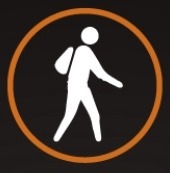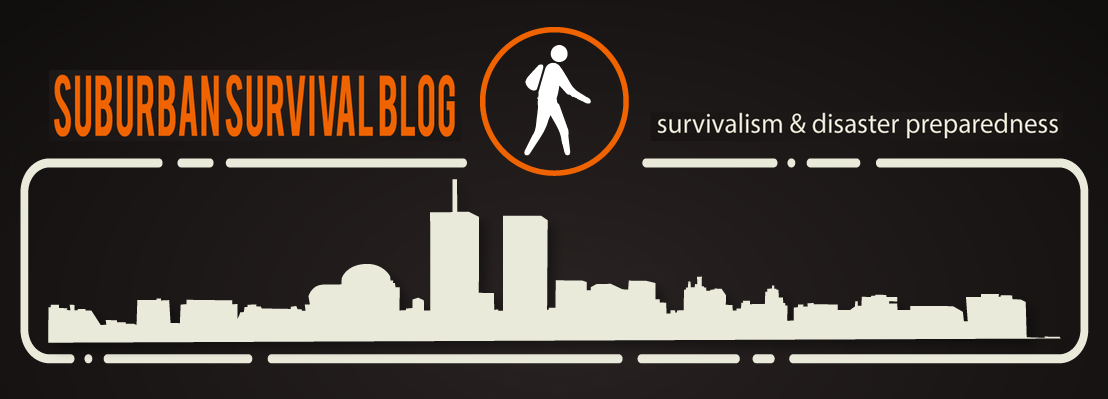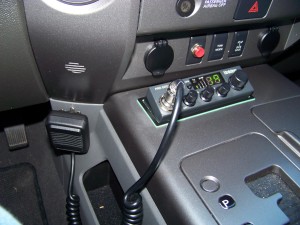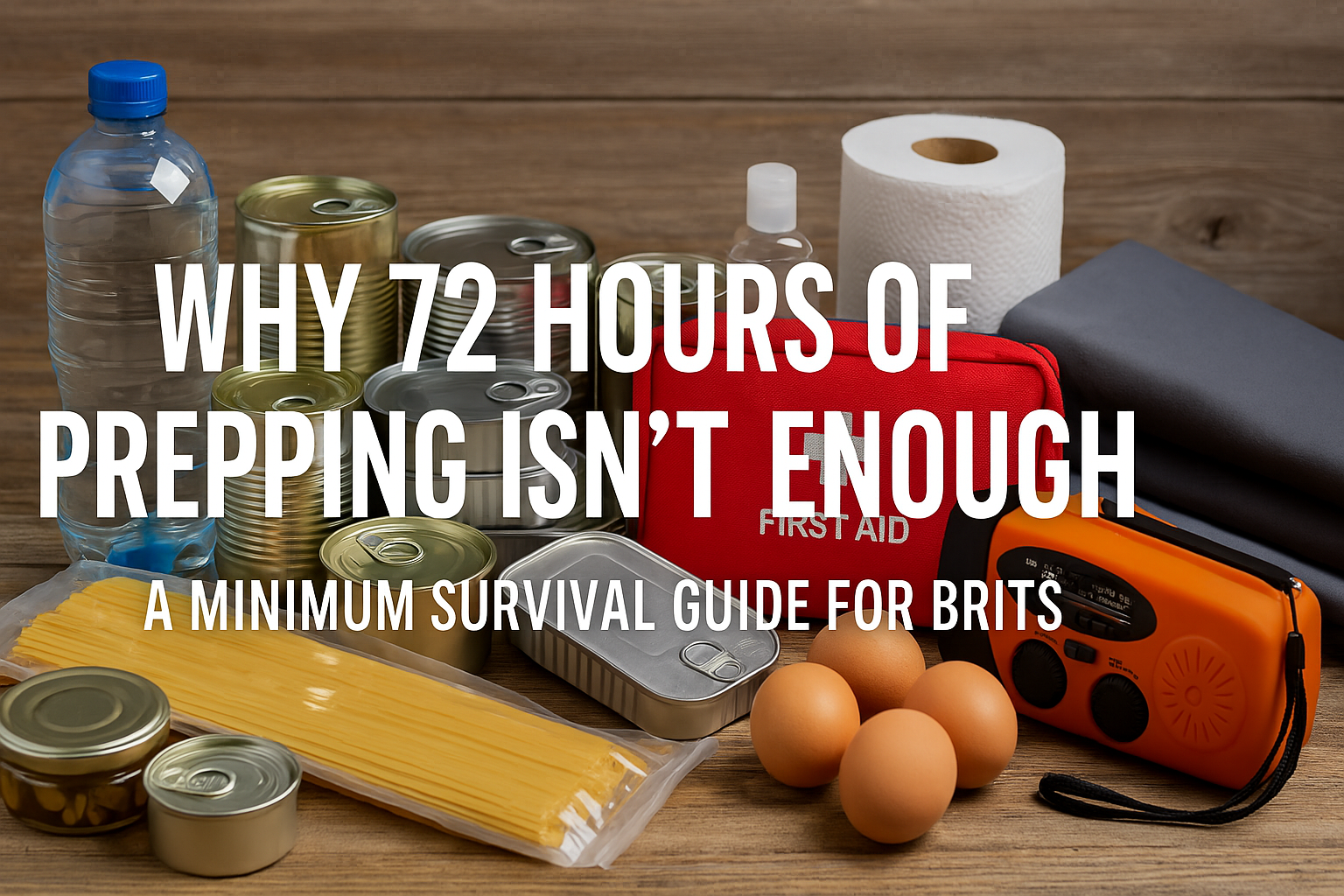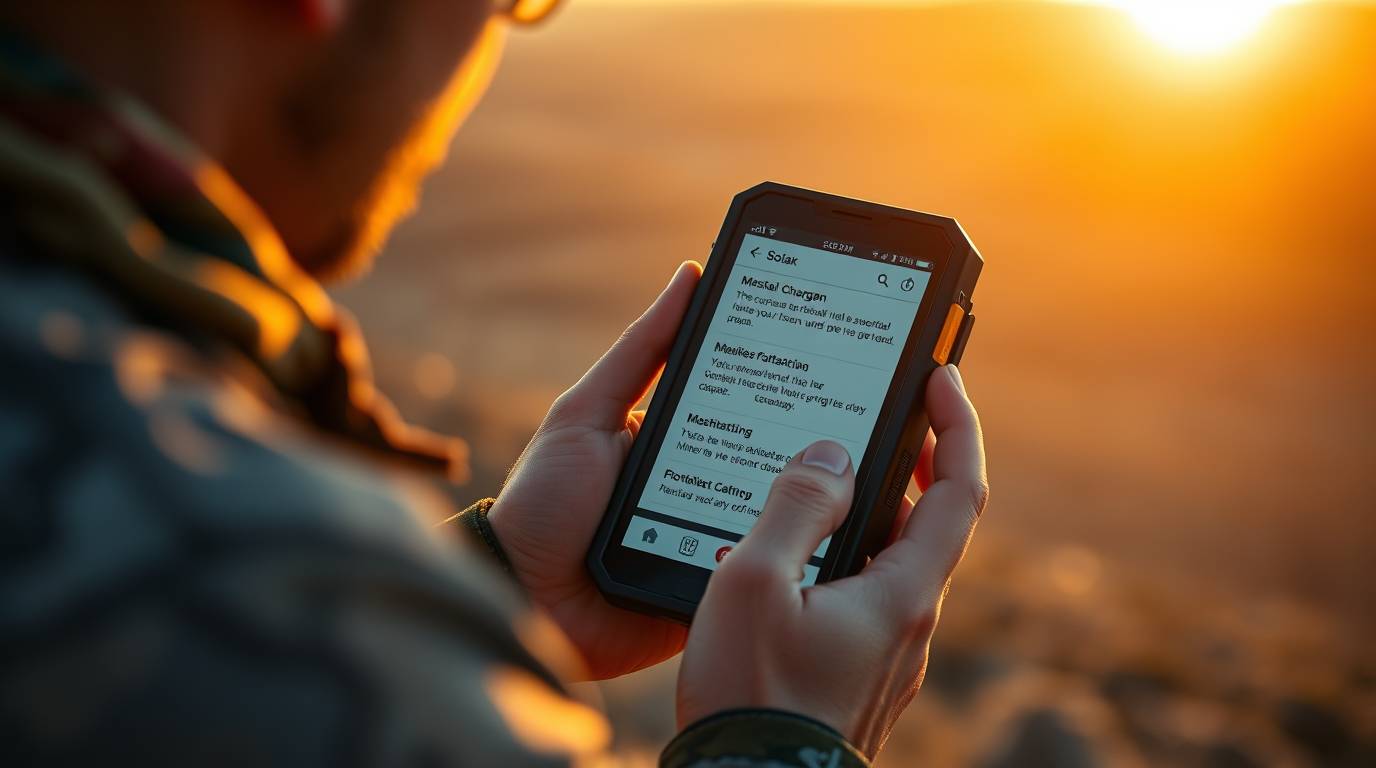Citizen band radio is free and requires no FCC license to operate so it is a good choice for local communication. If cell phones fail to work for whatever reason, it may be the best method for remote communication since its range is better than FRS and GMRS. When I installed my first CB in a vehicle, I was happy just to get it in and be able to transmit to my buddy who lived the next block over. I’ve matured since then and my tolerance for white noise is less than what it used to be. I’ve learned over the years how to properly set up a radio system and I’m normally left with a CB that has few problems. So, I’m writing this to help those of you that use citizen band radio in your vehicles, but may be plagued with noise, weak signals, or are just generally unhappy with your radios performance… at worst, this text should give you a jumpstart in your quest for a 1:1 standing wave ratio (and if you have no idea what that is, continue reading).
Actually, the components of a radio system are simple… power, radio, feedline, and antenna. If all function properly, the radio shouldn’t give you any problems. But for vehicle use, with all those wires and working parts, problems do arise. I’ll talk about each of the above mentioned components and other aspects of radio communication you may need to know for a proper set up. Please keep in mind, these pages are not entirely comprehensive about CB installation or uses and may not answer all your questions… it’s written based upon my experiences in radio communication and quite frankly, I haven’t experienced it all… yet. But with that being said, here goes…
Antenna
The two most important things to consider when mounting an antenna are grounding and positioning; when both of these things are considered and handled properly, you should receive a decent SWR reading (more on SWR later). The best way to ground an antenna is to drill holes for the mounting bracket into a metal portion of your vehicle. If you’re concerned about resale value and don’t want to drill, look into mobile mounting units that require no drilling from a supplier like HRO 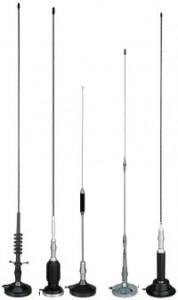 (Ham Radio Outlet); they sell units for doors, trunks, rain channels, etc.
(Ham Radio Outlet); they sell units for doors, trunks, rain channels, etc.
An antenna mounted in the middle of a metal roof will get the best signal because it is surrounded by a reflective surface. However, you may have a problem grounding the antenna without causing a leaking problem in your roof (but that would of course mean you won’t be asked to drive that often so it has its upside). You should mount the antenna where you will get the best SWR without sacrificing clearance or risking damage to the antenna or mount… or getting while driving in a rainstorm. I recommend a pickup bed immediately behind the cab, a lower quarter panel, or the lid of a trunk. If you mount your antenna in any of these locations, you should get be able to clear the roof line of your vehicle by about 6” to 1’ with a 36” antenna and transmit decently.
Two other things to consider are antenna quality and length. First, quality… simply put, the two best brands of antenna on the market are Firestick and K40; I would stick with either of these two brands for a mobile unit. Second, the length of your antenna is a matter of preference quite honestly, 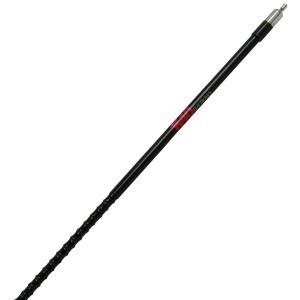 although I will admit that longer antennas generally transmit and receive better. The reason it is more a matter of preference than performance is clearance. A 6’ antenna mounted on a roof is going to have some clearance issues with your garage, trees, etc.; but if you choose to mount your antenna on a bumper, then a 6’ model would probably be fine. I use a three foot antenna on my pickup and can transmit about 5 miles on the regular 40 citizen band channels. Just another issue to keep in mind when you purchase your setup.
although I will admit that longer antennas generally transmit and receive better. The reason it is more a matter of preference than performance is clearance. A 6’ antenna mounted on a roof is going to have some clearance issues with your garage, trees, etc.; but if you choose to mount your antenna on a bumper, then a 6’ model would probably be fine. I use a three foot antenna on my pickup and can transmit about 5 miles on the regular 40 citizen band channels. Just another issue to keep in mind when you purchase your setup.
Feedline
The feedline is the length of coax cable from the radio to the antenna. There are subtle differences in coax feedline based upon insulation, grade of cable, etc. Generally speaking, the better the feedline, the better it will transmit your signal, so buy quality coaxial cable. When buying the necessary mounting supplies, you need to make sure it is all matched for impedance… almost all CB radios will have a 50 ohm impedance jack for the antenna input and most coax sold for CB radios is as well- but 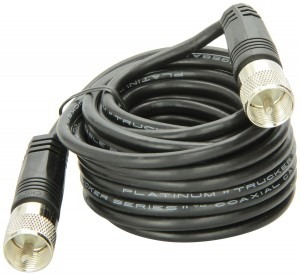 it doesn’t hurt to ask before you buy. Much has been said about the length of the feedline for a CB radio… some people say that 18’ is the proper length, some people say 17’ is the proper length. To be honest, impedance match is the most important thing… but I cut my coax to 17’4” staying in practice with radio theory that the feedline should be a factor of the wavelength that you will transmit on (I won’t bore you with the calculation with MHz and inches). 17’4” is probably much more than you will need, but will allow for an antenna choke if you need it. Be sure to buy feedline that already has PL259 connectors already installed if you’re not familiar with the installation process. But FYI, it’s not difficult to learn if you’re familiar with soldering; any radio technician can explain the process.
it doesn’t hurt to ask before you buy. Much has been said about the length of the feedline for a CB radio… some people say that 18’ is the proper length, some people say 17’ is the proper length. To be honest, impedance match is the most important thing… but I cut my coax to 17’4” staying in practice with radio theory that the feedline should be a factor of the wavelength that you will transmit on (I won’t bore you with the calculation with MHz and inches). 17’4” is probably much more than you will need, but will allow for an antenna choke if you need it. Be sure to buy feedline that already has PL259 connectors already installed if you’re not familiar with the installation process. But FYI, it’s not difficult to learn if you’re familiar with soldering; any radio technician can explain the process.
Radio and Installation
First, let me bash on the handheld units a bit. CB transmission is essentially line of sight transmission and anything that blocks the line of sight is going to weaken the signal. A handheld CB is for use outside of a vehicle… using it inside a vehicle you get minimal transmission distance because the signal bounces off the metal components of the rig… and even with a soft top jeep, the signal still needs to pass through a barrier and as a result it’s weakened. So if you’re using a handheld and wonder why you can’t hear much, there’s the reason. I will admit that I have a portable unit, a Midland 75–820, that is a handheld unit with a separate magnetic base antenna for use while in a vehicle. It’s performance is adequate but not optimal.
Frankly, the midland setup has two major problems, 1) engine noise which can be caused by the rotation of the alternator feeding back through the electrical system (a problem more prevalent on older vehicles but still present on many today) because the ground for everything is through the cigarette lighter… and 2) the limited volume the unit puts out with such a small speaker (an operator in a loud truck or topless jeep may have problems using this CB when driving on the highway). I use this unit only as a backup unit or in a second vehicle that doesn’t have a hard wired setup.
I currently use a Cobra 18WXST II. It is a reasonably priced unit from a quality manufacturer. Regardless of what you buy, most quality units will have an internal noise filter, scanning feature, and NOAA weather bands, but be sure to buy the unit best suited for your needs. If you’re interested in SSB transmitting or extended range, you may want to get a better unit; I recommend the Cobra 148GTL.
Now, it sounds as though it should be common sense but be sure to mount the unit where it will be easy to use and not an obstruction while using the vehicle (the dash board is probably a bad choice as 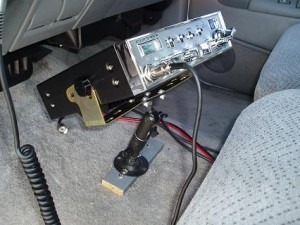 is the foot well near the pedals). I recommend bolting the unit to the center console or using a RAM mount somewhere on the transmission hump. Cleanliness of installation should be considered too. Do you want coax cable on the floor of your back seat or run under the carpet? Do you want to run the wires out an existing hole in the chassis or drill a new one? I normally run the power line through the dash and directly to the battery; this eliminates some noise you can receive when tapping into an existing hot line or fuse (more on that in part 2). Be sure to use a fuse for your radio before hooking it up or you may soon be buying a new radio. The coaxial cable I normally run under the carpet or floor mats to the rear of the cabin and drill a small hole (if necessary) near the mount.
is the foot well near the pedals). I recommend bolting the unit to the center console or using a RAM mount somewhere on the transmission hump. Cleanliness of installation should be considered too. Do you want coax cable on the floor of your back seat or run under the carpet? Do you want to run the wires out an existing hole in the chassis or drill a new one? I normally run the power line through the dash and directly to the battery; this eliminates some noise you can receive when tapping into an existing hot line or fuse (more on that in part 2). Be sure to use a fuse for your radio before hooking it up or you may soon be buying a new radio. The coaxial cable I normally run under the carpet or floor mats to the rear of the cabin and drill a small hole (if necessary) near the mount.
This equipment and these installation techniques should help you set up a radio properly. The cost shouldn’t be too bad… all of this can be obtained for under $100 with new equipment but if your budget allows, feel free to spend more. In part two of this article I will cover some common CB radio problems and how to fix them.
